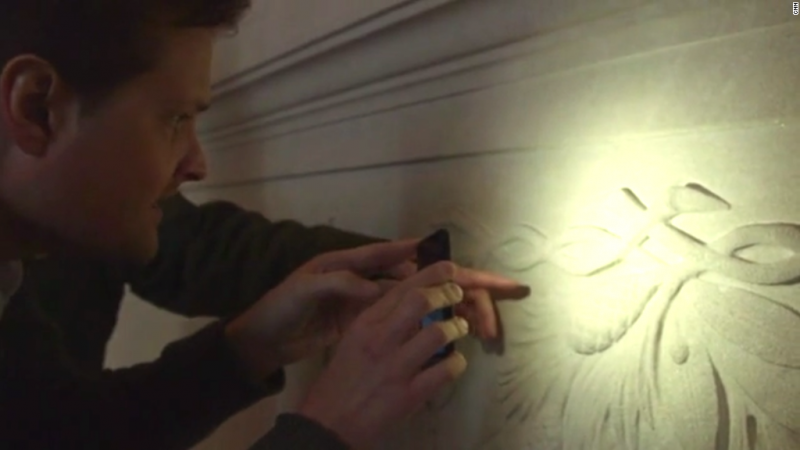Park Rangers at the Lincoln Memorial see it almost every day: Tour guides telling eager visitors that the number of steps leading to the temple match Lincoln’s age when he died; that his white hands send a message in sign language; and that you can see Robert E. Lee’s face sculpted in the back of his head.
It’s all bunk, National Park Service Ranger Michael Kelly told me during a recent visit. “It’s not a fact.”
There are 57 steps at the Lincoln Memorial; Lincoln was 56 was he was killed by an assassin’s bullet.
There’s no evidence that the sculpture had any intention to fashion his hands in sign language.
And no, Lee’s face isn’t hidden in Lincoln’s curls.
“Behind the statue of Lincoln, there is a symbol of Robert E. Lee,” said Kelly, who gives a regular tour of “secrets” of the nearby Washington Monument. He gestured toward the Arlington Cemetery, where to this day, Lee’s home sits atop a hill. “That symbol is, famously, the view across the river.”
Many of these myths and secrets of the monuments, Kelly explained as we visited the memorials to Presidents George Washington, Thomas Jefferson and Lincoln, are hidden in their history.
In honor of President’s Day, below are some of our favorites:
Civil War Graffiti at the Washington Monument
Union soldiers were posted at the Washington Monument during the Civil War, which was still under construction when fighting broke out. At the base, some of the men left their mark by carving their names and drawing pictures, which you can still see today.
They wouldn’t be the last ones to deface the 555-foot structure. Over the years, tourists who braved the stairwell to the top often stopped to carve their own names, which prompted the Park Service to require that almost all visitors take the elevator instead. Today, a select number of visitors can use the stairs — and only with a guided escort.
A Name Hidden in the Lincoln Memorial
It’s almost impossible to see clearly without a flashlight, but if you look closely on the north wall of the Lincoln Memorial, you’ll find the letters “EBL,” carved faintly into the stone, which stand for Evelyn Beatrice Longman. She carved the decorative border around the Lincoln’s addresses that line the walls and was a protege of Daniel Chester French, who directed the Lincoln Memorial project.
Is the statue of Jefferson really looking at the White House … or something else?
It’s commonly noted that the statue of Thomas Jefferson that sits along Washington’s Tidal Basin is positioned with his eyes gazing toward the White House. But Kelly says that may not actually be the case.
Instead, Jefferson appears to be looking just to the east of the presidential mansion, the home of the U.S. Treasury building. There, a statue of Alexander Hamilton, the first secretary of the Treasury Department, looks southward in Jefferson’s direction.
Hamilton and Jefferson were rivals who fought over the direction of the country in the Republic’s early days.
“Both men served under George Washington. Both became leaders of different political parties,” Kelly said. “George Washington hated the idea of factions and of political parties, wanting everyone to recognize themselves as nothing other than Americans. Jefferson and Hamilton are those that are beginning to pull the administration apart and even pull the country apart into parties.”
“Jefferson is looking at Hamilton, and Hamilton is looking back,” he said.
Kelly pointed across the Tidal Basin toward the Washington’s towering obelisk.
“Standing between them is the monument to President Washington, who tried to bridge their differences, who tried to unify them in common purpose, but failed,” Kelly said. “It’s not a secret, but no one really connects it.”
